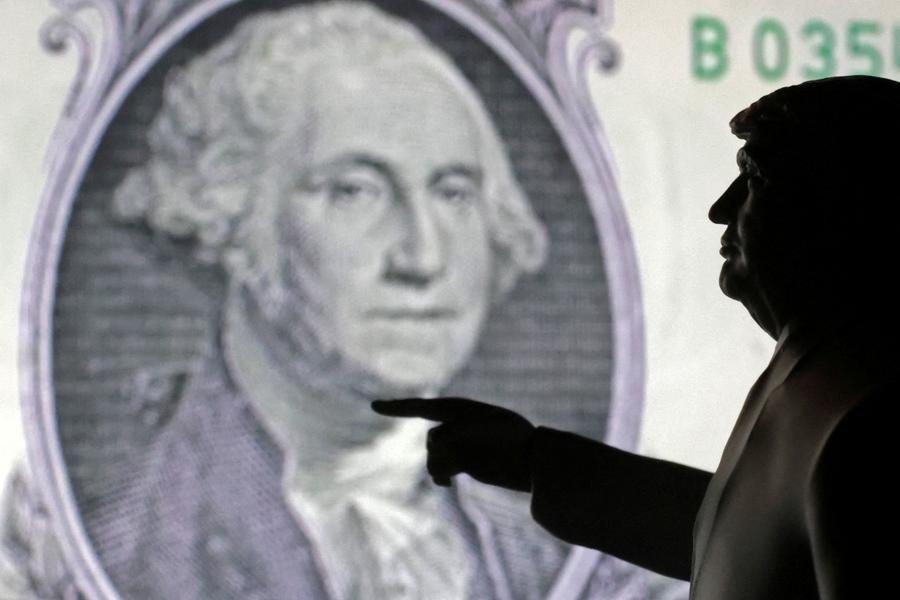(The views expressed here are those of the author, the Founder and Global Strategist at TPW Advisory)
NEW YORK – Europe and Asia could leverage U.S. President Donald Trump’s “America First” strategy for their own benefit, eventually spurring the development of regional tripolar FX blocs that could erode the dominance of the U.S. dollar and reshape global markets.
The dollar has struggled this year, especially since Trump’s April 2 tariff announcement. While the currency is on pace for one of its strongest weeks this year after jumping around 1% on Monday following the announcement of U.S.-EU trade deal, this short-term move doesn’t change the long-term trends that could undermine the greenback’s position.
MOVING IN REVERSE
Economic dominance in the future could largely depend on access to affordable, efficient energy to power artificial intelligence technologies. And in the race to dominate the industries of the future, the U.S. is arguably going in reverse.
It’s retreating from the renewables space, as seen in the administration’s recent move to eliminate many clean energy subsidies. The president appears to be making the bet that the U.S. can maintain energy dominance indefinitely by relying on its own fossil fuel resources.
This could ultimately result in uncompetitive power costs in the future, especially given that China is already dominating in clean energy technologies like solar and electric vehicles.
As historian Adam Tooze argues, “for the first time in two centuries the West is no longer the leader in future technologies but the follower.”
TWIN DEFICITS
While Trump may be seeking to enhance American self-sufficiency, the administration’s policies may actually be increasing the country’s dependency on foreign capital.
Trump’s recently passed budget bill – which looks pretty ugly to fiscal watchdogs despite its name – could cement the U.S.’s position as the world’s biggest capital importer by adding an expected $3.4 trillion to the U.S. deficit over the next decade, according to estimates by the nonpartisan Congressional Budget Office, potentially locking in 6% to 7% budget deficits for years.
Importantly, the U.S. has also been running current account deficits of roughly 4% over the past several years, and this widened to 6% of GDP in Q1 2025, according to the U.S. Bureau of Economic Analysis.
By spending beyond its means and running these twin deficits, the U.S. will continue to require large amounts of foreign capital inflows.
But unfortunately for Washington, this capital may soon be harder to come by, if both Europe and Asia seek to keep more of it closer to home.
Europe is pushing for increased defense spending, as seen in its new goal to spend 5% of GDP on defense in the coming decade. While the bloc has agreed to increase U.S. energy purchases through the recently announced U.S. trade deal, much of that agreement remains up in the air and the volumes suggested are pretty unrealistic. Meanwhile, Asia has begun to trade more internally, as China has been focusing on export diversification.
TRI-POLAR FX BLOCS
A growing regionalization of supply chains began during the pandemic and appears to be accelerating as Trump seeks to drive production back to the U.S. and all major global powers focus on securing regional raw material access (e.g., rare earths and other critical minerals) for national security purposes.
This shift could eventually create the foundation for true regional FX blocs across Asia, Europe and the Americas.
This development would have a major impact on the global economy, currency values and capital markets, arguably providing a more balanced global economy with three poles of supply and demand, each attuned to their own regional dynamics rather than the current set-up whereby the global economy responds primarily to the Federal Reserve and U.S. internal dynamics.
Recently, European policymakers have discussed what ECB President Christine Lagarde has termed a “Global Euro” moment, one built upon a European Savings and Investment Union designed to foster both a European safe-haven asset that could eventually compete with U.S. Treasuries and deeper, more liquid European capital markets to fund European infrastructure and innovation.
Of course, this won’t be an overnight shift. The dollar remains the world’s dominant reserve currency, and the U.S. debt market is estimated to be more than three times the size of Europe’s, according to the World Economic Forum.
But simply having a larger percentage of European capital stay at home could make a huge difference. Europe’s current account surplus has averaged roughly $400 billion over the past few years, and Europe invests roughly $300 billion per year in offshore financial assets, according to the New York Times.
Within Asia, Pan Gongsheng, Governor of the People’s Bank of China, has recently highlighted China’s interest in having the yuan play a larger role in a multi-polar currency world.
Other officials soon followed, discussing how China plans to improve home market access for foreign capital while expanding opportunities for the Chinese to invest abroad. While China’s capital account remains closed, Asian currencies already primarily trade off the yuan rather than the U.S. dollar.
Even though China faces challenges, such as its fight against deflation, its efforts on this front – namely, boosting consumption and reining in excess supply, especially in the renewable energy space across solar, wind and batteries – could ultimately help attract more foreign capital by boosting China’s growth profile and corporate earnings.
There is obviously no guarantee that these measures will be successful, but the government’s intense focus on achieving these goals is evident. The recent decision to provide $12.4 billion in childcare subsidies suggests a potential policy Rubicon has been crossed, as China has typically resisted these types of direct fiscal stimulus measures in the past.
In a world of currency blocs, both Europe and Asia could emerge as potential winners, as they erode the U.S.’s position as the world’s financial powerhouse. So while many investors may get lost in the short-term currency noise, it might be wise to instead focus on the long-term signal.
(The views expressed here are those of Jay Pelosky, the Founder and Global Strategist at TPW Advisory, a NYC-based investment advisory firm. You can follow Jay on Substack at The Tri Polar World).
Enjoying this column? Check out Reuters Open Interest (ROI), your essential new source for global financial commentary. ROI delivers thought-provoking, data-driven analysis of everything from swap rates to soybeans. Markets are moving faster than ever. ROI, can help you keep up. Follow ROI on LinkedIn, and X.
(Writing by Jay Pelosky; Editing by Anna Szymanski and Jamie Freed)






